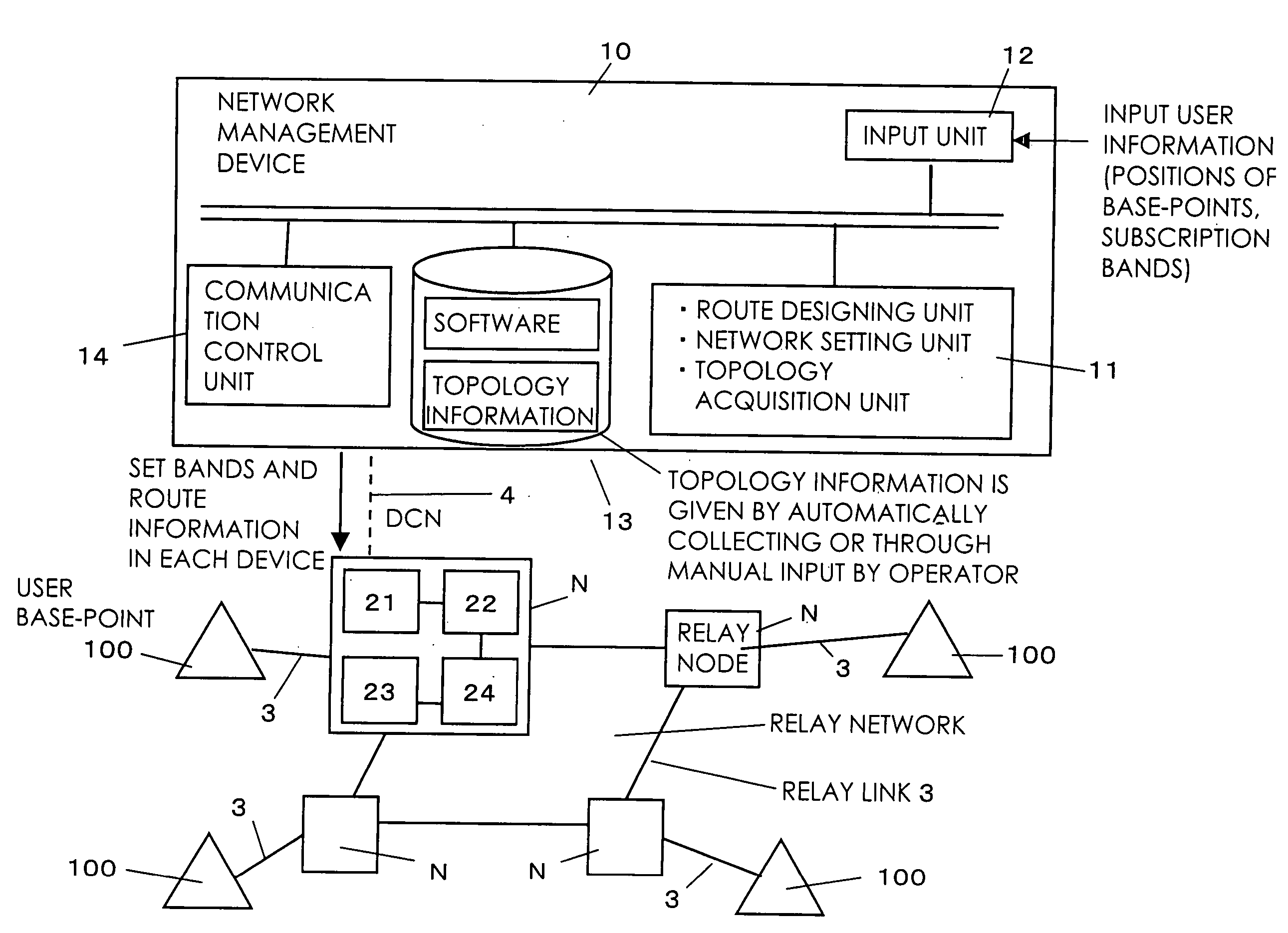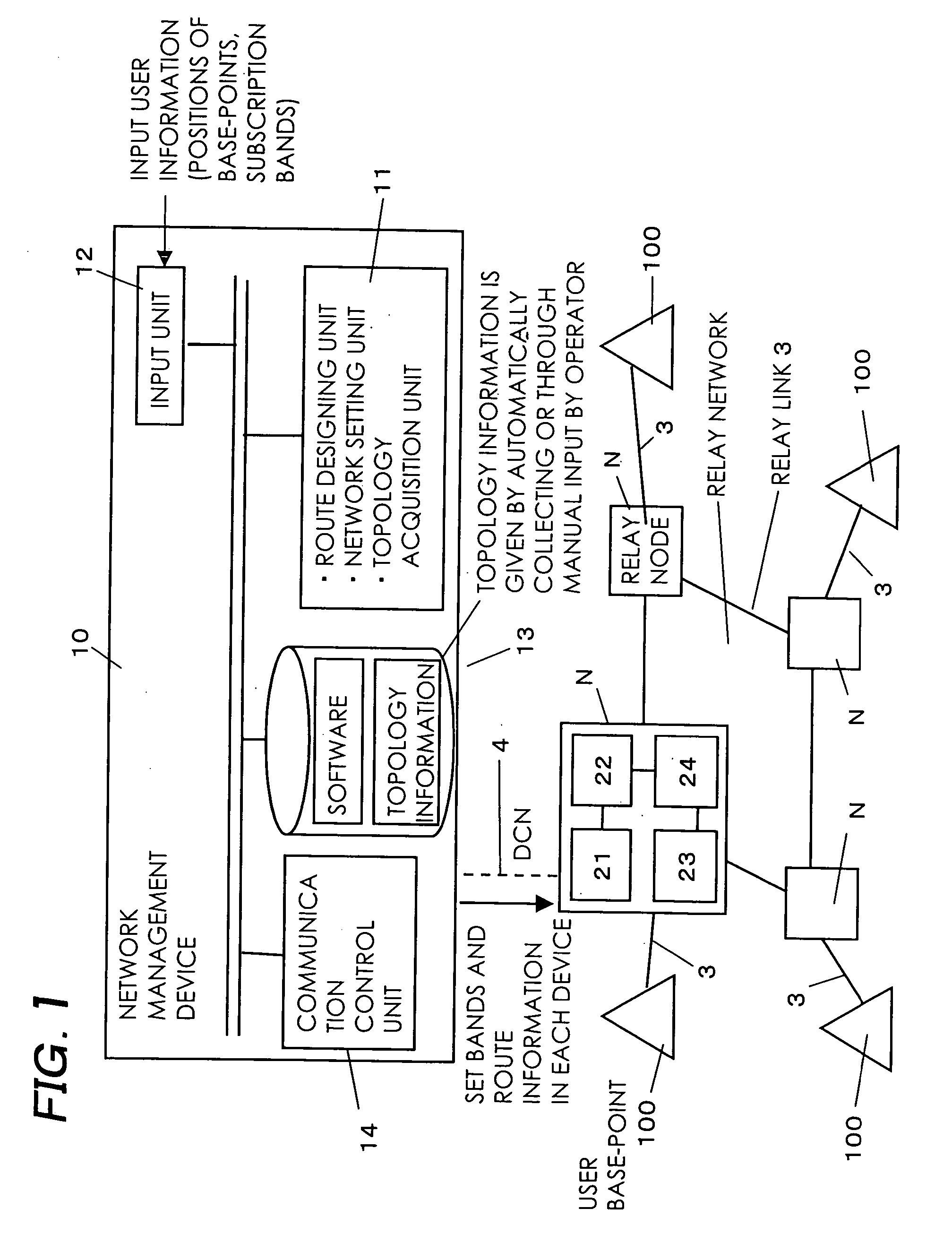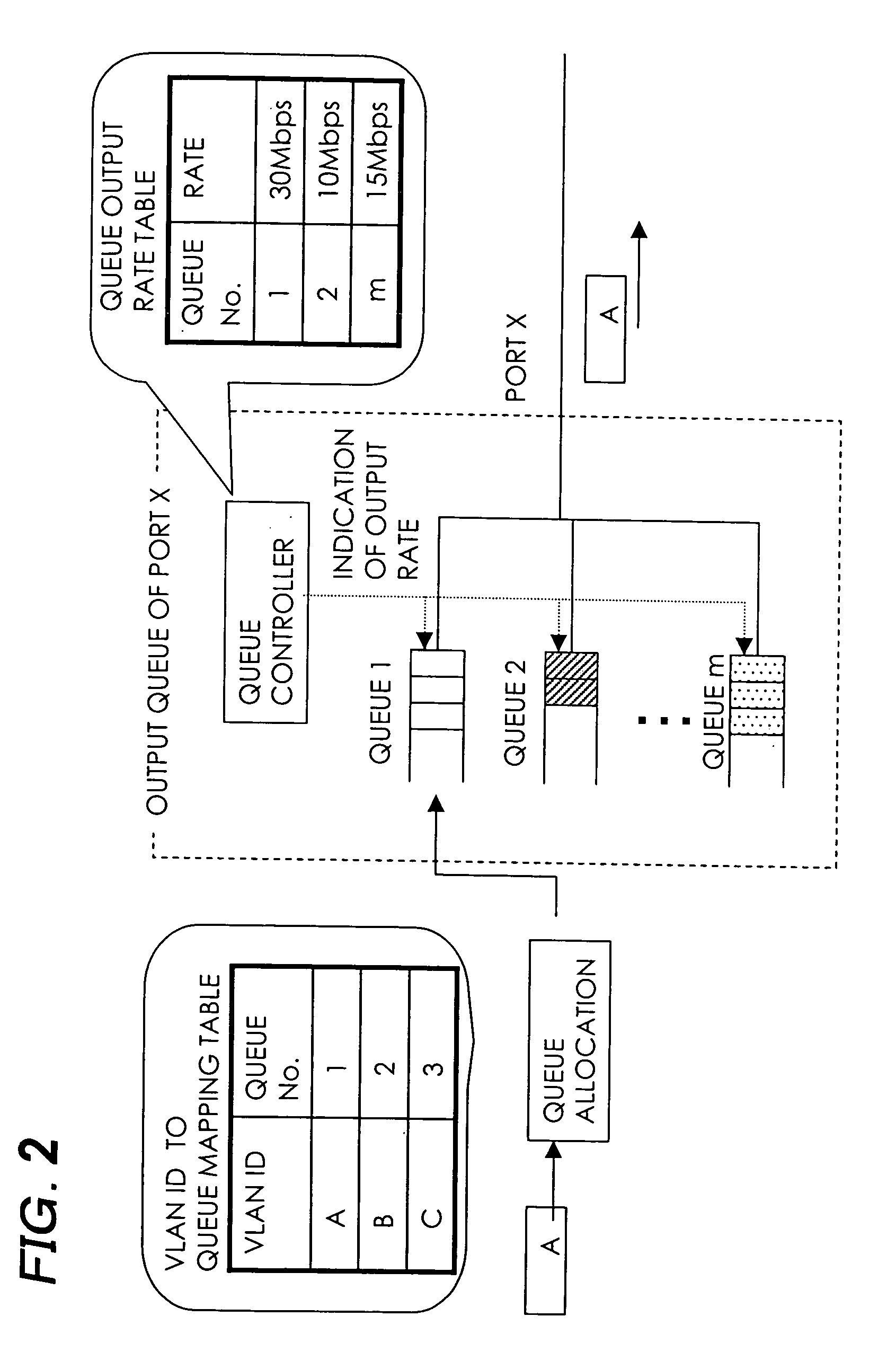Route designing method
a routing and routing technology, applied in the field of routing design, can solve the problems of waste of bandwidth, waste of bandwidth, waste of bandwidth, etc., and achieve the effect of efficiently accommodating user traffic and performing the route design
- Summary
- Abstract
- Description
- Claims
- Application Information
AI Technical Summary
Benefits of technology
Problems solved by technology
Method used
Image
Examples
embodiment 1
[0092]FIG. 1 is a view showing a whole architecture of a network system by way of an embodiment 1 of the invention.
[0093] As shown in FIG. 1, the network system in the embodiment 1 includes a network management device 10 having a route designing function, relay nodes (network devices) N for relaying a user traffic, and a network that connects these devices to each other. The respective relay nodes N are connected via links 3, thus configuring a relay network. A network 4 for setting may be, for example, Ethernet. The setting network 4 may connect the network management device 10 to each of all the relay nodes and may also connect the network management device 10 to only a single unspecified relay node N, wherein this relay node N may send a setting command (setting information) to other relay nodes N via a relay network for transferring (forwarding) the user traffic.
[0094] The relay node N includes an input unit 21 for accepting an input of the traffic of communications (the user ...
embodiment 2
[0123] As compared with the embodiment 1 discussed above, an embodiment 2 has a different method of allocating the communication bands by the route designing unit, and other configurations are the same. Therefore, the repetitive explanations of the same configurations as those in the embodiment 1 discussed above, are omitted.
[0124] The route designing unit in the embodiment 2 obtains the route that connects all the user sites in the same way as the above-mentioned, and allocates the communication bands so that an upper limit of the communication bandwidth allocated to an arbitrary port is equal to or lower than a sum of upper limits of the communication bands allocated to other ports. Namely, the smaller of total values of the traffics relayed by the relay nodes N at both ends of each link on the route, is adopted as an allocation band.
[0125] The allocation bands herein indicate output rates allocated to the output ports at both ends thereof. The link allocation bands are determin...
embodiment 3
[0148] As compared with the embodiment 2 discussed above, an embodiment 3 has a different method of determining the communication route by the route designing unit, and other configurations are the same. Therefore, the repetitive explanations of the same configurations as those in the embodiment 2 discussed above, are omitted.
[0149] In the case of using the bandwidth allocating method according to the embodiment 2 discussed above, the route having the minimum consumable bandwidth invariably exists on a shortest route tree in which any one of the nodes within the relay network serves as an origin (root).
[0150] Such being the case, it is possible to determine the route having the minimum consumable bandwidth at a low cost of calculation (algorithm) in the case of effecting the bandwidth allocations.
[0151] Namely, the routing setting unit of the network management device 10 obtains the shortest route trees with the respective relay nodes each serving as the root, then acquires the r...
PUM
 Login to View More
Login to View More Abstract
Description
Claims
Application Information
 Login to View More
Login to View More - R&D
- Intellectual Property
- Life Sciences
- Materials
- Tech Scout
- Unparalleled Data Quality
- Higher Quality Content
- 60% Fewer Hallucinations
Browse by: Latest US Patents, China's latest patents, Technical Efficacy Thesaurus, Application Domain, Technology Topic, Popular Technical Reports.
© 2025 PatSnap. All rights reserved.Legal|Privacy policy|Modern Slavery Act Transparency Statement|Sitemap|About US| Contact US: help@patsnap.com



